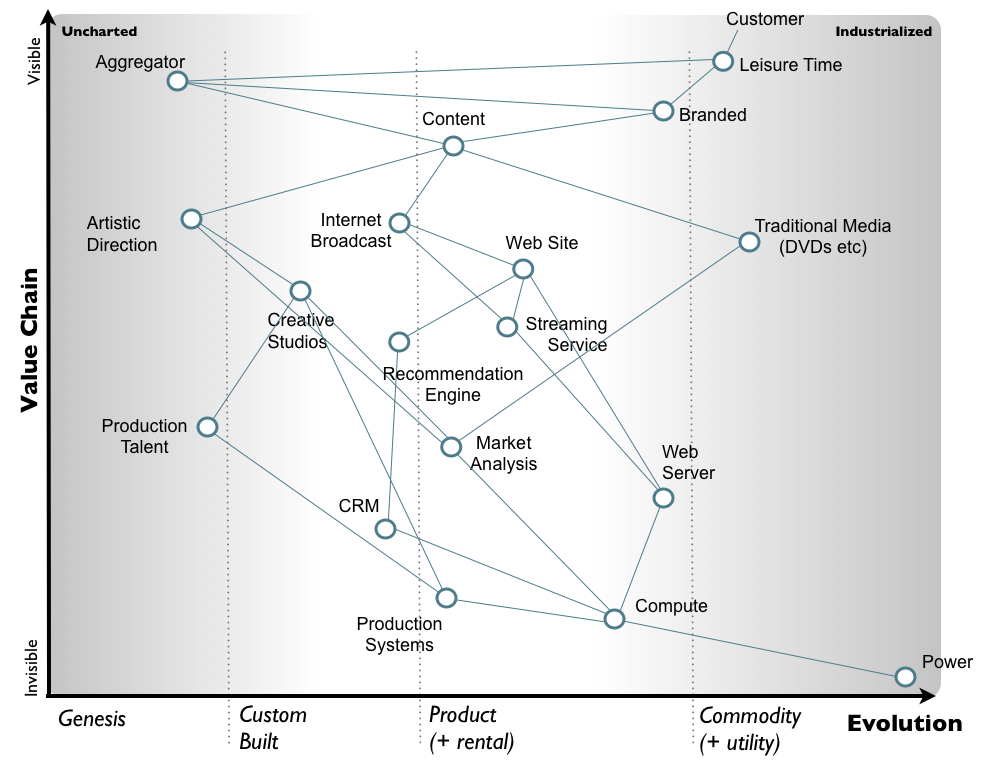2.5. Artefacts to produce
2.5.1. User needs
By the end of Discovery there should be a well-documented set of user needs, informed and evidenced by the user research you have completed.
It is important that you frame the user need correctly: they should be described using words that actually reflect what the user’s trying to do, not just loosely describing the kind of content you think they might need.
It is a good idea to share the user needs on posters around the team space, along with quotes and pictures from users you have interviewed which back-up the need.
2.5.2. Service map
The process of mapping user journeys has been described in greater detail earlier in this document.
From these user journeys, you can create a map of the wider problem space. This map can then be annotated with the agencies, technology and data involved in each stage of the service.
You can highlight the specific areas of the service that you’re focussing on for Alpha, and use the map to identify potential next steps on a roadmap.
It’s likely that your service map will go through several iterations - feedback from subject matter experts and stakeholders will help you improve it.
The service map below was created by the UK’s Ministry of Justice, to show the activities involved in the end-to-end criminal justice process. There’s a larger version on Flickr.
2.5.3. Wardley map
Wardley Maps (sometimes called “value chain maps”) are diagrams that map the components in the value chain of a service against their position on the technology evolution scale.
A map starts with the user need at the top, and breaks down into a dependency tree of the things that support it. This includes everything from internal systems and capability to the power supply and the office building.
In mapping the value chain, you can start to analyse which areas of the service are unique enough to be built bespoke, and which components are generic enough to buy off-the-shelf. In turn, this will suggest where self-organising teams could form.
As all technology gradually moves further along the evolution scale over time, you can use the map to predict emerging opportunities to deliver more efficient and better services for users. For example, you may be able to use commodity cloud computing over internal infrastructure, or start to expose an existing bespoke system as a common service for other agencies.
We recommend reading the primer on Wardley Mapping. In the video below, Simon Wardley explains why mapping is important and how it can be used to increase situational awareness within an organisation.
An example Wardley Map for a television company is included below:

